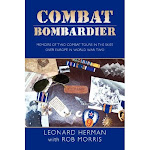
Fellow historian Marilyn Walton sent this interesting story and video today. You will like it, too. I quote Marilyn from here on:
"Point of interest...about 3 minutes 20 seconds into the clip, you will
see an F6F Hellcat, it's hydraulics shot away during a strafing run,
pancake on the carrier deck and slew into the island. A deckhand was
crushed between the aircraft and the superstructure and killed. The
number on the plane is 30.
The lanky pilot sitting dazed in the cockpit is a gentleman named Andy
Cowan, a friend of mine. He is hale and hearty at 87 and lives just
north of Salinas, Ca. To this day he cannot recall this accident
without a tear coming to his eye. The swabby who was killed was his
crew chief.
Andy is a marvel. He has absolute total recall of those bygone days.
He is regularly invited back to the Naval War College to give a power
point demonstration to the young fighter jocks of today's Navy. They
hang on his every word. A living link to the past, to the days when
you got up close and personal to kill the enemy. No over-the-horizon
missile kills..
Andy was the longest serving Navy fighter pilot in WWII. He was on his
shakedown cruise off Gitmo on December 7th, 1941. The carrier Ranger
made flank speed to Norfolk and the pilots were transshipped to San
Francisco by train, then sped to Hawaii by ship. He saw Pearl not long
after the sneak attack, and again is unable to speak of it...a
horrible disaster. He immediately went aboard the Lexington and in the
course of the war had 4 carriers shot out from under him as he fought
in every major Pacific battle. Coral Sea, Midway, Battle of Santa
Cruz, Guadalcanal, Iwo Jima...you name it. Credited with 4.5 kills.
Flew with Butch O'Hare, Cmdr Thatch (inventor of the "Thatch Weave"),
flew with high scoring ace David McCampbell...served under Admirals
Nimitiz, Bull Halsey...
He has studied the Japanese side of the Pacific War and is a
recognized expert on their side of it. He can reel off the names of
all their capital ships and admirals and battles from memory.
Remarkable man...and still alive to tell the tale."
Lately, links on blogger are not working well. Just cut-and-paste this link for video: http://tinyurl.com/yrpc24














